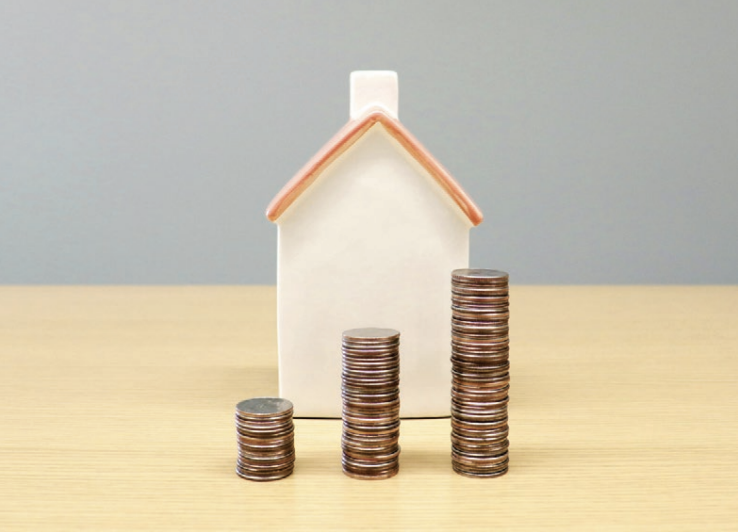Further interest rate cuts required to increase purchasing power and improve consumer confidence
According to the Royal LePage House Price Survey released today, the aggregate price of a home in Canada increased 1.9 per cent year over year to $824,300 in the second quarter of 2024. On a quarter-over-quarter basis, the national aggregate home price increased 1.5 per cent, despite a slowdown in activity in the country’s most expensive markets.
“Canada’s housing market is struggling to find a consistent rhythm, as the last three months clearly demonstrated,” said Phil Soper, president and CEO, Royal LePage. “Nationally, home prices rose while the number of properties bought and sold sagged; an unusual dynamic. The silver lining: inventory levels in many regions have climbed materially. This is the closest we’ve been to a balanced market in several years.
“This trend dominates activity in two of the country’s largest and most expensive markets, the greater regions of Toronto and Vancouver, where sales are down yet prices remain sticky,” Soper continued. “There are exceptions. In the prairie provinces and Quebec, low supply and tight competition persist.”
Despite the Bank of Canada’s move to cut the overnight lending rate by 25 basis points on June 5th, from 5.0 per cent to 4.75 per cent, buyers did not immediately rush back to the market as initially expected.
“This spring, with bank rate cuts highly anticipated, we saw some buyers race to get a deal done ahead of an expected spike in demand. Yet, when that first cut finally occurred in early June, market response was tepid,” said Soper.
“A change in monetary policy drives consumer behaviour in two important ways. Lower rates mean lower monthly payments, opening the door to some families previously shut out of the market. Secondly is the psychological signal broadcast to sidelined buyers that the tide is turning, and that market activity is about to pick up again,” added Soper. “Not surprisingly, the quarter-point cut to the bank rate didn’t substantially improve the affordability picture. As for consumer sentiment, our early year research indicated that only one in ten potential homebuyers would be motivated by a tiny rate drop. The tale the market tells as rate cuts get to the point of a material reduction in the cost of borrowing should be a very different one.”
According to a Royal LePage survey, conducted by Leger earlier this year, 51 per cent of sidelined homebuyers said they would resume their search if interest rates reversed. Ten per cent said a 25-basis-point drop would prompt them to jump back into the market, 18 per cent said they are waiting for a cut of 50 to 100 basis points, and 23 per cent said they need to see a cut of more than 100 basis points before they will consider resuming their search.
The Royal LePage National House Price Composite is compiled from proprietary property data nationally and regionally in 64 of the nation’s largest real estate markets. When broken out by housing type, the national median price of a single-family detached home increased 2.2 per cent year over year to $860,600, while the median price of a condominium increased 1.6 per cent year over year to $596,500. On a quarter-over-quarter basis, the median price of a single-family detached home increased 1.8 per cent, while the median price of a condominium increased 0.8 per cent. Price data, which includes both resale and new build, is provided by RPS Real Property Solutions, a leading Canadian real estate valuation company.
The national aggregate home price remains well above pre-pandemic levels. In the second quarter of 2024, the aggregate price of a home in Canada recorded an increase of 30.8 per cent over the same period in 2019.
“2024 marks the fifth year since the pandemic and post-pandemic rebound began to wreak havoc on real estate prices. Yes, values remain well above 2019 levels, yet a thirty per cent rise in home values spread over five years, or six per cent annually, is approaching long-term norms for Canadian residential property appreciation. The market has a way of correcting mistakes.”
Inflation and interest rates
For the last two years, the national housing market has seen home prices fluctuate between modest declines and increases – with some regional exceptions – as a result of the impacts of higher interest rates. As the Bank of Canada cautiously navigates the delicate balance between lowering the key lending rate and keeping inflation in check, some segments of Canada’s housing market have stalled.
“Canada’s housing market faces pent-up demand after two stifling years of high borrowing costs. While inflation control is crucial, persistently high rates are increasing the risk of a surge in demand when buyers inevitably return. New household formation and immigration keep fueling the need for housing, and a sudden release could create much market instability. This highlights the need for a more nuanced approach that balances inflation control with economic vitality,” added Soper.
“It is worth noting that once you remove the impact of high mortgage rates themselves from Canada’s Consumer Price Index calculation, inflation today sits well below the two per cent target.”
According to Statistics Canada’s latest report, Canada’s inflation rate rose to 2.9 per cent in May, up from 2.7 per cent in April. When shelter costs are removed, that figure dips to 1.5 per cent.
Increased borrowing costs slow new home construction
Elevated borrowing rates are not only dampening housing market activity but also stifling the construction of new homes. Builders, who rely heavily on lending, are finding it increasingly difficult to finance new projects, exacerbating the country’s shortage of housing at a time when our population continues to grow.
“Gradual interest rate reductions could unlock a housing supply logjam,” said Soper. “Lower rates would not only empower buyers but also incentivize builders, who rely on borrowing for development. This is crucial to meet the diverse needs of our growing population. We need affordable options for first-time buyers, growing families, and downsizing retirees. Incremental rate adjustments are key to achieving a balanced and inclusive housing market. Without a significant supply boost, prices will continue to rise, impacting both those who seek home ownership and the one-third of Canadians in rental markets.”
The Canada Mortgage and Housing Corporation (CMHC) reported a month-over-month increase in national housing starts in May, following two months of decline. In Vancouver, where competition for housing remains extremely tight, housing starts declined, while Toronto and Montreal posted a lift in starts. Still, the rate of new construction remains well below what is required to satisfy demand.
“Canada’s housing market faces complex challenges. While raising interest rates was crucial to fighting inflation, it has unintentionally choked off the essential flow of new housing supply. Higher borrowing costs, coupled with labour shortages in the construction trades and rising material prices, have made it economically unsustainable for developers to launch new projects. This creates a perfect storm – our population is growing steadily, yet we’re building far fewer homes than what’s needed to meet that demand. This situation urgently needs innovative solutions to ensure Canadians have access to affordable housing options,” concluded Soper.

















